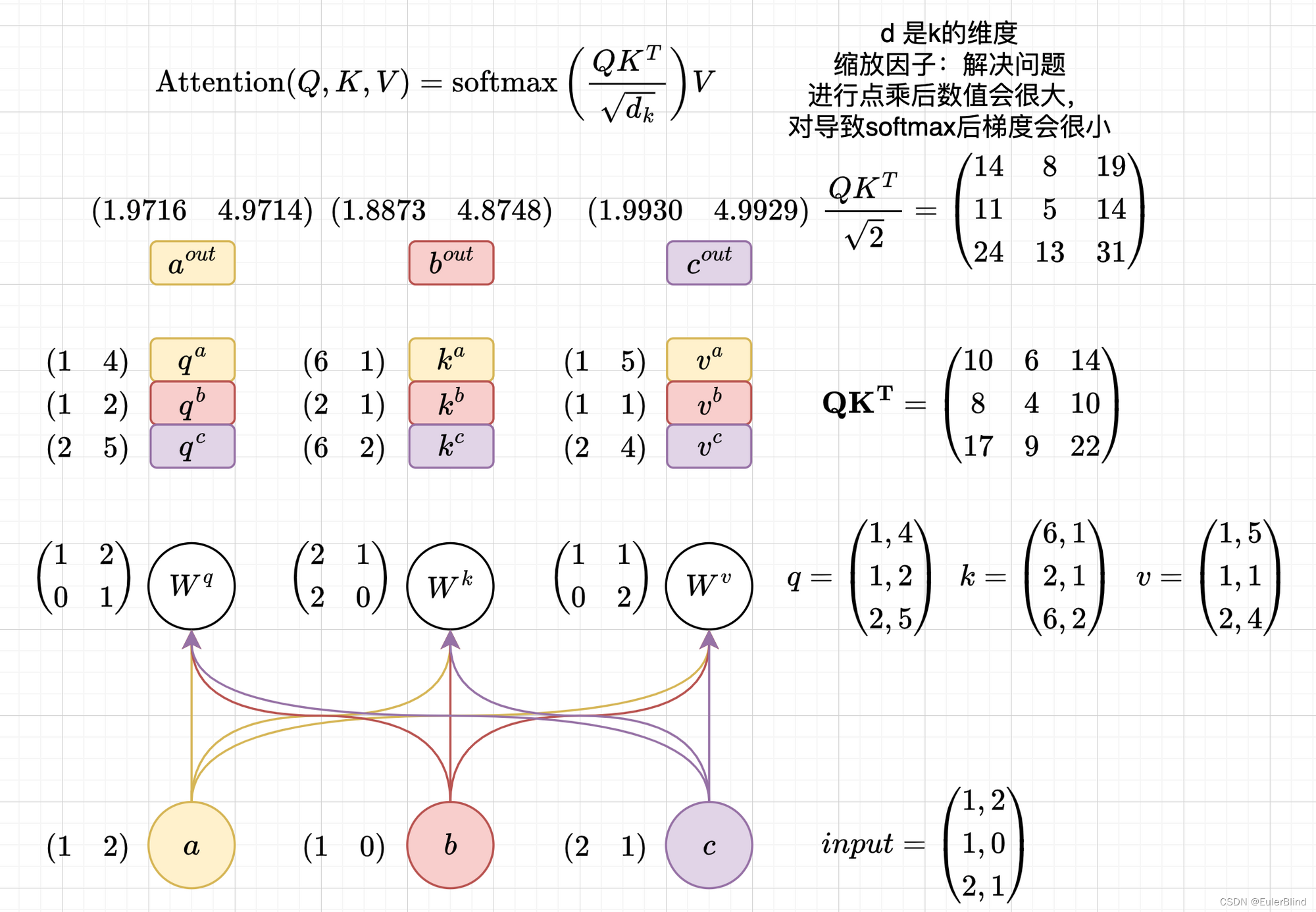自注意力机制
- 计算公式

- 计算流程

编辑
-
相关代码
import torch a = torch.tensor([1, 2], dtype=torch.float) b = torch.tensor([1, 0], dtype=torch.float) c = torch.tensor([2, 1], dtype=torch.float) # input input_tensor = torch.stack((a, b, c), dim=0) w_q = torch.tensor([[1, 2], [0, 1]], dtype=torch.float) w_k = torch.tensor([[2, 1], [2, 0]], dtype=torch.float) w_v = torch.tensor([[1, 1], [0, 2]], dtype=torch.float) q = torch.matmul(input_tensor, w_q) k = torch.matmul(input_tensor, w_q) v = torch.matmul(input_tensor, w_q) # 自注意力公式 # $$ # \\operatorname{Attention}(Q, K, V)=\\operatorname{softmax}\\left(\\frac{Q K^T}{\\sqrt{d_k}}\\right) V # $$ # output output_tensor = torch.softmax((q @ k.T) / 2 ** 0.5, dim=1) @ v print(output_tensor)
多头自注意力机制
-
计算流程
下图中为三个输入,分成两个head的情况,第一步根$W^q$,$W^k$,$W^v$求$q$、$k$、$v$跟自注意力机制中一致,不同处在于对于求取的$q$、$k$、$v$三个矩阵需要按照head个数均分后再组合,得到其中一个head结果$head_1^q$、$head_1^k$、$head_1^v$,在该head内部使用自注意力公式计算结果,由于这里给定的输入向量长度比较特殊,是一个1*2的向量,在head内部根据自注意力公式,softmax部分直接为1,其输出就是$head_1^v$。
最后,根据划分的head个数,将每个head输出的结果进行组合,得到每个输入对应的输出结果。
归纳一下,其计算步骤分为步。- 根据$W^q$,$W^k$,$W^v$三个矩阵分别计算出$q$、$k$、$v$。
- 根据head个数对$q$、$k$、$v$进行均分操作。这里其实就算不能完全均分也是可以计算的。
- 将刚刚均分的结果以head为单位进行重新组合。
- 在每个head内使用自注意力公式,计算出每个head的结果。
- 根据head个数,将每个head计算结果进行重新组合,得倒每个输入对应的输出。

编辑


